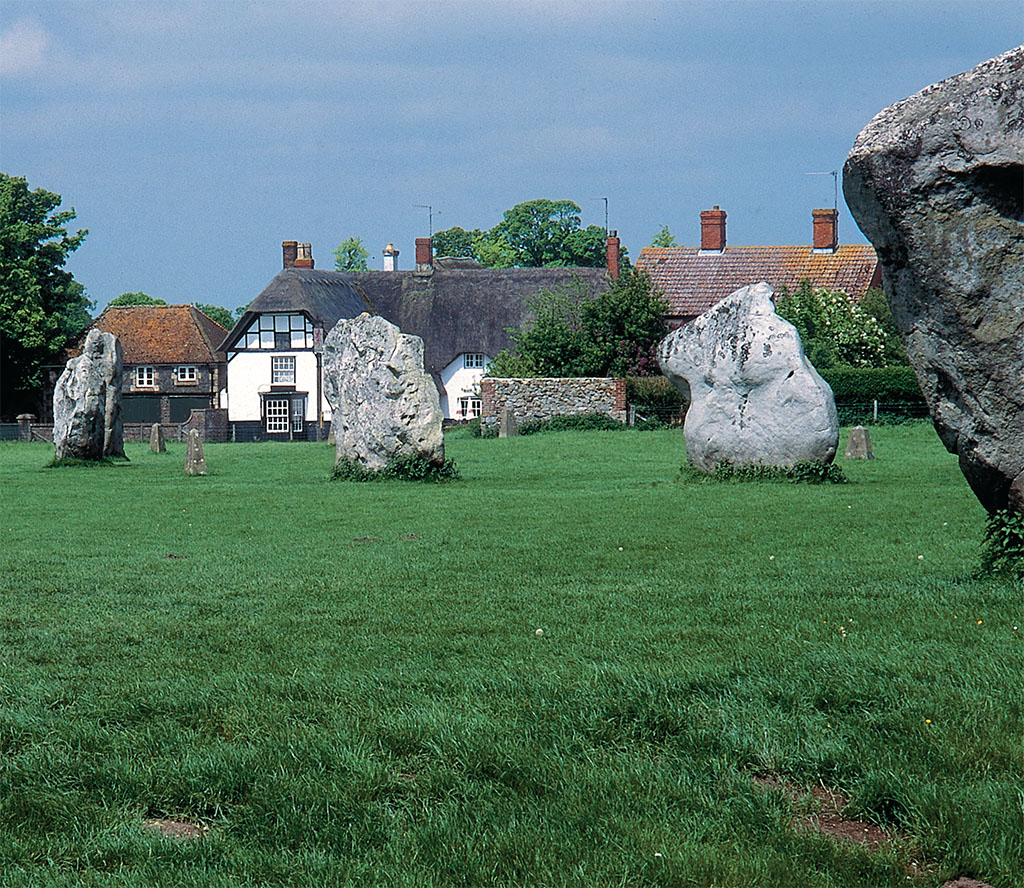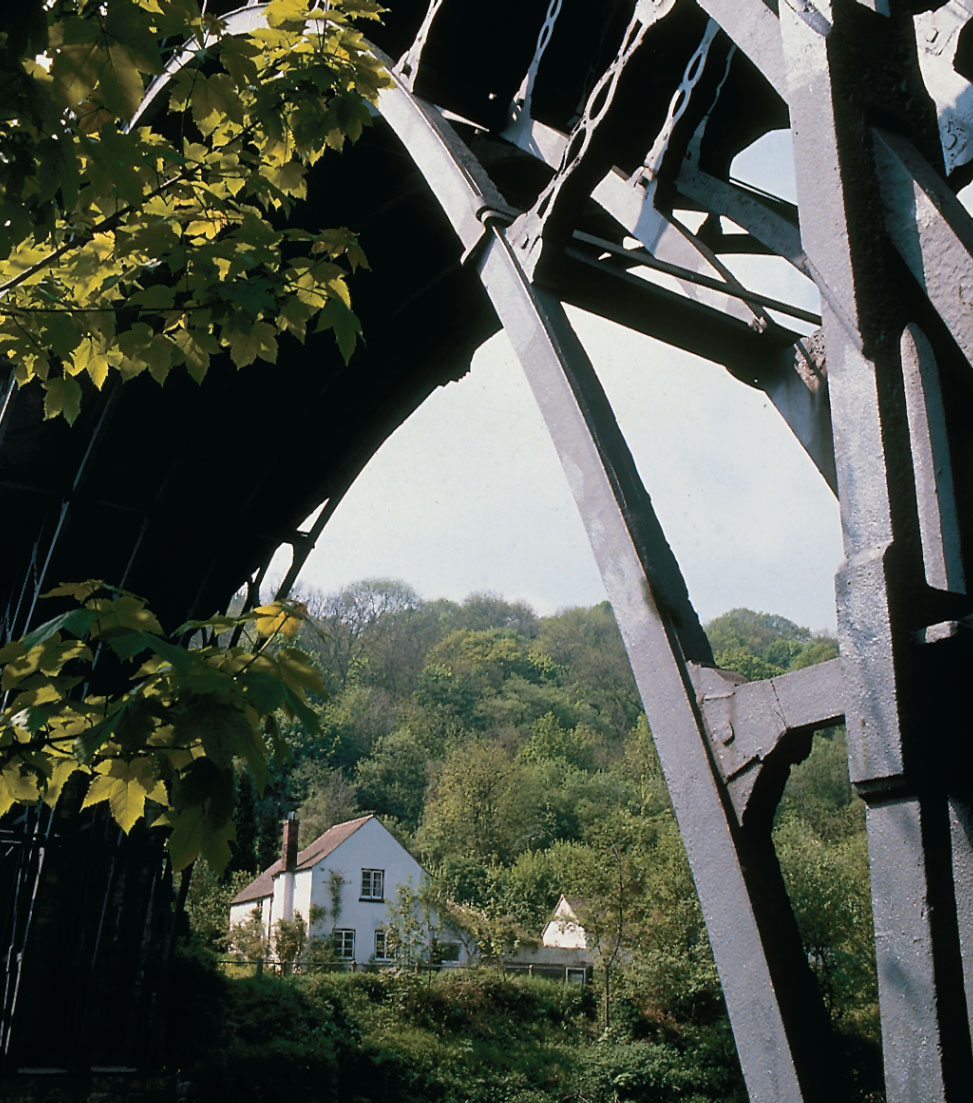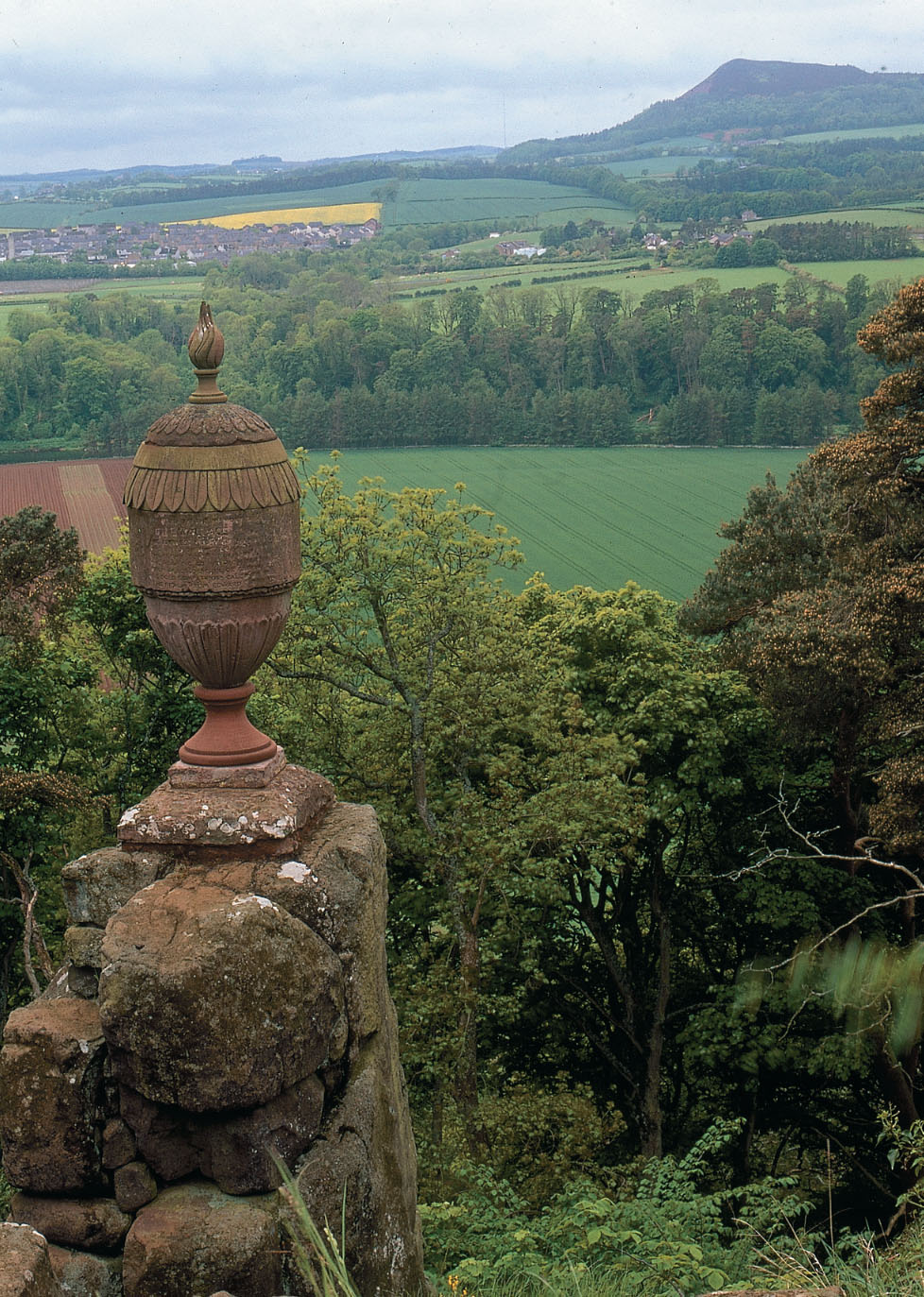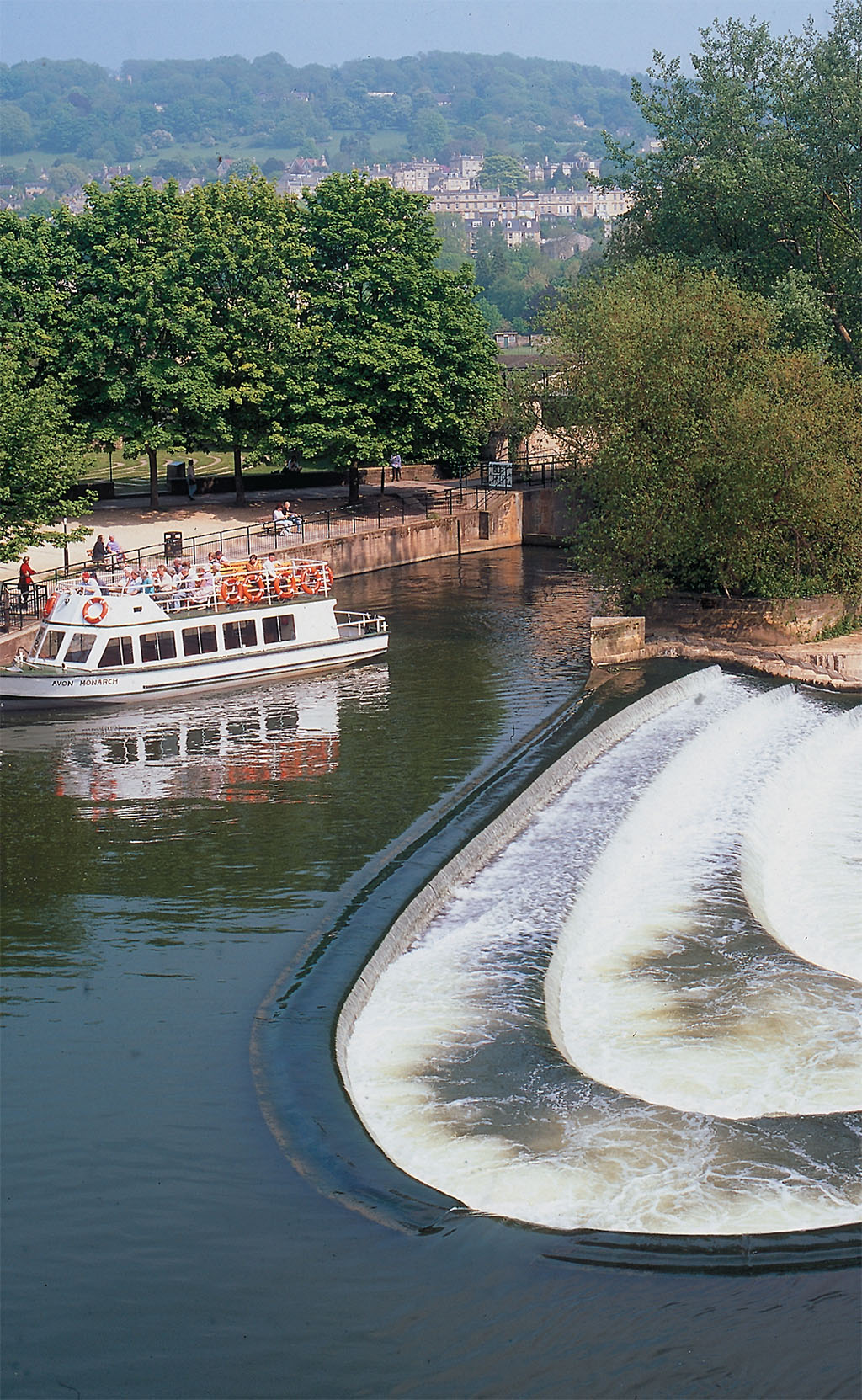
[caption id="30GreatMustSeePlacesInBritain_Feature" align="aligncenter" width="1024"]

JIM HARGAN
Stately homes and ancient monuments, castles and cathedrals, bustling market towns and awe-invoking landscapes, breath-taking gardens and painfully picturesque villages: from Lands End to John O’Groats, Great Britain bursts with visual grandeur and historic richness. Two lifetimes would not be long enough to see it all. For those of us trying to do it in one, London, Edinburgh, York and Bath well deserve their place on everyone’s must-see list. Your favorite British Heritage writers have enthusiastically helped us compile the 30 other places that ought to be there.
JAMES GRAHAM
Windsor Castle, Windsor, Berkshire
www.royal-windsor.com
The world’s largest and oldest occupied castle, one of the Queen’s three official residences (and her favorite), Windsor Castle sits on its 12-acre site overlooking the Thames and keeps the kingdom safe as it has since its foundation by William the Conqueror after 1066. Watch the Changing of the Guard; call in to St. George’s Chapel or the State Apartments for a taste of Royal living. Travel back to childhood and feel very large standing next to Queen Mary’s Dolls’House.
Brighton, East Sussex
www.visitbrighton.com
London-by-the-Sea grabs you as it has for two centuries: wicked fun on the pier, strolling and shopping in The Lanes, it has the rakish charms of a naughty uncle. The stunning Brighton Pavilion brings a fantasy of India while the Volk’s Electric Railway sparks as it transports visitors along the promenade. Whatever you do on your visit, it always seems to create an appetite for fish and chips, best eaten within sight and smell of the sea.
Chartwell, Westerham, Kent
www.nationaltrust.org.uk/chartwell
A grand house that was a family home, Chartwell can stand for Britain’s glory. Drink in the magnificent views over the Weald of Kent that seduced Winston Churchill in 1924 and prompted his purchase of the property where he lived for more than 40 years. See the rooms as they were in Churchill’s time, right down to the daily papers and his famous cigars. Visit the landscaped gardens, lakes, Lady Churchill’s rose garden and the kitchen garden. Many of Churchill’s paintings still hang in the house.
Beamish Museum, Beamish, Durham
www.beamish.org.uk
This world-famous open air museum tells the story of the people of North East England at two important points in their history: 1825 and 1913, the high point of the heavy industries of the region. Beamish stands in 300 acres of beautiful County Durham countryside, with houses, shops and other buildings having been dismantled and brought to the site for rebuilding. All are filled with furniture, machinery and objects, real artifacts, from museum collections. Costumed staff help bring the past alive.
HMS Victory, Portsmouth
www.hms-victory.com
The wooden world of the Georgian Navy that faced down the might of the French and Spanish navies intent on taking their war worldwide lives on in HMS Victory. While best known for her role in the Battle of Trafalgar, Victory continues to have a dual role as the flagship of the commander in chief Naval Home Command and a living museum for the Georgian navy. HMS Victory remains a commissioned ship of the Royal Navy.
SIÂN ELLIS
Dover Castle, Dover, Kent
www.english-heritage.org.uk/dovercastle
Put yourself on the frontline of history. Dover Castle, “the key to England,” has scanned the shortest sea crossing to the Continent for more than nine centuries: welcoming guests, or bristling against invasion. Experience the hospitable hubbub of King Henry II’s court in the Great Tower. Relive Britain’s “finest hour” in the tunnels beneath the White Cliffs, the military nerve-center that masterminded the epic evacuation of Dunkirk (1940).
Ironbridge Gorge, Coalbrookdale, Shropshire
www.ironbridge.org.uk
Amazing, inspiring, shocking: This six-square-mile pocket of England was the most technologically advanced area in the world at the end of the 18th century. Discover pioneers of the Industrial Revolution in 10 museums, their ironworks, chinaand tile-making. The first-ever iron bridge (1779) still traces its leap of progress across the River Severn, pointing to a bold future. The valley is quiet. What ever happened to England’s proud industries?
[caption id="30GreatMustSeePlacesInBritain_img1" align="aligncenter" width="1024"]

JIM HARGAN
St. Davids, Pembrokeshire
www.stdavids.co.uk
The village-cum-city that is St. Davids—Britain’s smallest city—is a singularly potent rural outpost. There’s the rustic 6th-century birthplace of David, Wales’ patron saint; the medieval cathedral and Bishop’s Palace ruins. Quirky-quaint village life ticks by. Pick up the thread that ties it all together, in a quiet moment on the timeless cliffs; that mysterious Age of Saints that kept Christianity alive on Britain’s Celtic western seaboard after the Romans left feels very close indeed.
Lavenham, Suffolk
www.lavenham.co.uk
For a stroll through Olde England, the superbly preserved medieval town of Lavenham is hard to beat. Pink, cream and apricot colored half-timbered houses sway along narrow streets—some 300 buildings are listed for architectural and historical significance. Lavenham flourished through the 14th-16th centuries on wool and cloth making: witness the cathedral-like Church of St. Peter and St. Paul. Impertinent modern intrusions like telegraph poles are banished, and antiques shops, tearooms and pubs complete the dream day out.
Hadrian’s Wall, Wallsend to Bowness-on-Solway
www.hadrians-wall.org
Built by order of Emperor Hadrian in AD122, the Roman frontier across northern England stretches 73 miles. Stomp the National Trail to get the full effect! Time has worn the wall, but the forts and museums give fabulous nitty-gritty insights into legionary life: Writing tablets record sending underpants to chilly England (Vindolanda), there are the impressive baths at Chester’s cavalry fort—and the chummy, multi-seated latrine at Housesteads.
SANDRA LAWRENCE
[caption id="30GreatMustSeePlacesInBritain_img2" align="aligncenter" width="973"]

JIM HARGAN
Avebury Stone Circle, Avebury, Wiltshire
www.avebury-web.co.uk
Stonehenge, just up the road, gets all the column inches, but Avebury’s standing stones encircle an entire village with a darkened veil of enigma. Full of mystery and wonder, it raises as many questions as it answers, and a walk around its rugged perimeter on a peaceful summer’s evening, just as the sun sets, will confirm its reputation as one of the most mysterious places in the country.
The London Eye, South Bank, London
www.londoneye.com
It seems almost prosaic to recommend this well-known attraction, but it really is worth the ride. Amazing views over the vast skyline of London extend to the horizon in every direction. It is loved by tourists and locals alike; I try to take a flight every year. Working out the exact time of sunset pays dividends.
Chastleton House, Moreton-in-Marsh, Oxfordshire
www.nationaltrust.org.uk/chastleton
A true hidden gem, Chastleton is unlike virtually every other National Trust property. It’s neither imposing nor in particularly good condition, but what it lacks in grandeur it makes up for in soul. A fine Jacobean manor, it’s been allowed to age with grace, and has a wonderful “lived-in” feel. Don’t miss the hidey-hole used by Cavalier Arthur Jones while his Roundhead pursuers were wined and dined by his (rather nervous) wife just a few feet below.
The Roman Baths, Bath, Somerset
www.romanbaths.co.uk
I tried not to include this, honest. But it just feels wrong to leave it out of a list of the best stuff in England. The mellow beauty of the Bath stone, the nigh-on palpable impression of life nearly 2000 years ago, the deeply personal nature of the “finds” discovered in the sewers and, yes, that unmistakable taste of Bath water, make this truly unmissable. Well, all right, I was lying about the water. It’s disgusting.
Stowe Landscape Gardens, Buckingham,
www.nationaltrust.org.uk/stowegardens
An extraordinary, gigantic, formal 18th-century landscape garden with more than 40 temples, follies and water features; you never know what you’re going to come across next at Stowe. Miles of walks ensure that however busy it may get, even in the height of the season there’s always a little corner you can claim for your own piece of personal peace. There is no bad season, however, to visit Stowe.
JIM HARGAN
Dartmoor, Devon
www.dartmoor-npa.gov.uk
The wail of the devil dogs rings out as the Dewar, that prince of evil, hunts for unbaptized souls across the empty moors. It’s easy enough to believe in the tales behind The Hound of the Baskervilles when you see the huge, weirdly shaped granite tors that top these fells, as well as the many stone monuments from the depths of prehistory that they guard.
Thomas Hardy Country, Dorset
www.visit-dorset.com
Here you’ll find the epitome of English rural beauty, with an amazing number of fine old thatched villages still centered on their church, pub, and post office store. You’ll also enjoy the bustling charm of its market towns, Dorchester, Beaminster and Shaftesbury, as well as the sea cliffs of Portland and Purbeck.
North Wales Castles, Gwynedd
www.northwales.co.uk/castles.htm
Built at the zenith of medieval civilization, these huge castles of Edward I perch along the sea cliffs of Snowdonia, terror weapons designed to cow the Welsh into submission to the English king. Conwy, Beaumaris, Caernarfon and Harlech: These are the ultimate castles, set amid stunning scenery in one of the wildest corners of Britain south of Hadrian’s Wall.
[caption id="30GreatMustSeePlacesInBritain_img3" align="aligncenter" width="978"]

JIM HARGAN
The Scottish Borders
www.scot-borders.co.uk
With vast moors and forests dotted by manors—called pele towers—built like tiny castles, this is a land formed by centuries of warfare and reaving; paradoxically, its stunning old abbeys date from an earlier period of peace and prosperity. Sir Walter Scott sang of its history and beauty, and his vision still lies upon the land. Don’t miss a visit to Abbotsford, Scott’s home near Melrose.
Wester Ross, Highlands
www.celticfringe.org.uk
Deep in the Scottish Highlands, Wester Ross offers great mountains that meet the sea, reflected in mirror-surfaced lochs that pour out over waterfalls. It’s reached by the 90-mile Destitution Road, one of the most rugged and beautiful drives in the Highlands. It extends deep into the Gaelic hinterlands to the unspoiled villages of Poolewe and Gairloch—and far away from the well-trod tourist trails.
DANA HUNTLEY
York Minster, York
www.yorkminster.org
The seat of the Archbishop of York and largest Gothic cathedral north of the Alps, York Minster is a marvel of ecclesiastical architecture. Compared to many such medieval church fortresses, York Minster is bright and airy with high, open clerestory windows, amazing ceiling bosses and the largest assemblage of medieval stained glass in Britain. The beautiful cathedral precincts spread to York’s 14th-century city walls.
[caption id="30GreatMustSeePlacesInBritain_img4" align="aligncenter" width="981"]

JIM HARGAN
Edinburgh Castle, Edinburgh
www.edinburghcastle.gov.uk
There are castles and then there are castles. Perched on a volcanic outcrop above the Royal Mile and towering over Scotland’s capital, Edinburgh Castle retains the air of power and muscle that such fortresses were intended to convey. Still an active duty military post, the castle houses Scottish crown jewels (the Honours of Scotland), and Scotland’s national war memorial. It also houses 12th-century St. Margaret’s Chapel (Edinburgh’s oldest building) and the National War Museum, regimental museums and the Royal palace—home to many of Scotland’s monarchs over the centuries.
Rhondda Heritage Park, Trehafod
www.rhonddaheritagepark.com
Among the most distinctive areas and subcultures of Britain are the coal valleys of South Wales, most famous among them being the Y-shaped Rhondda Valley, rising northwest of Pontypridd. The story of the collieries, the people and the way of life that fueled the South Wales economy for more than a century is brought to life vividly at the Lewis Merthyr Colliery that is now the Rhondda Heritage Park.
Chatsworth House, Bakewell, Derbyshire
www.chatsworth.org
Known as “The Palace of the Peaks,” Chatsworth House is one of the most magnificent stately homes and treasure houses in Britain. Ancestral seat of the Dukes of Devonshire since Bess of Hardwick settled there in 1549, the 126-room mansion is a priceless trove of art and furnishings. Its famous gardens to the north and east of the house blend seamlessly into 1,000 acres of lush parkland.
Stourhead, Mere, Wiltshire
www.nationaltrust.org.uk/stourhead
English 18th-century landscape gardens surround many of the great ancestral homes of the aristocracy; the greatest of these is Stourhead. Long called the “Flagship of the National Trust,” the Wiltshire park and woodland gardens wrap around a manmade lake dotted with follies and flora. Any season of the year, Stourhead is truly the landscape where “every prospect pleases.”
JENNIFER DORN
Royal National Theatre, London
www.nationaltheatre.org.uk
Throughout the year the National is alive with theater on its three stages. But you don’t have to have a ticket for a performance to enjoy its public premises. Stop by its café, listen to free live music in the lobby, visit changing exhibitions, and look out on the Thames from the National’s terrace. Located halfway between the London Eye and the Tate Modern Museum, this is a good spot from which to explore all that the South Bank has to offer.
St. Paul’s Cathedral, London
www.stpauls.co.uk
An obvious choice, perhaps, but St. Paul’s, designed by Christopher Wren after the Great Fire of 1666, deserves a place on everyone’s “must see” list. This elegant cathedral with its familiar dome is so much a part of London’s history. It gave hope to Londoners during the bombings in World War II; it was the setting for the wedding watched round the world in 1981. The Whispering Gallery, an acoustic marvel, enables the faintest whisper to be heard clearly on the opposite side. Steep steps lead to the top of the dome for stunning views of London. Listen to St. Paul’s world famous choir at evensong.
Bath Skyline Circular Walk, Bath
www.nationaltrust.org.uk/bathskyline
Escape the hustle and bustle of the streets of Bath on all or part of this six-mile circular walk that looks down on the city’s spires and Georgian terraces. The walk starts near Bath University and winds around the 18th-century Prior Park Landscape Garden, taking in an Iron Age fort, hidden valleys and meadows. A free map is available from the Bath Tourist Information Center or from the National Trust’s website. It’s a whole new view of the beautiful city of Bath.
Bodnant Gardens, Tal-y-Cafn, Conwy
www.bodnantgarden.co.uk
Horticulturists from around the world come to these magnificent National Trust gardens for their renowned breeding. Bodnant’s 80 acres, open to the public from mid-March to the end of October, contain formal gardens, ornamental ponds, a slew of rose gardens and an enclosed laburnum arch that is usually a blaze of yellow blooms from late May through early June. Views of the spectacular mountains of Snowdonia from many Bodnant prospects is the icing on the cake. Nearby Conwy is a wonderful visit as well.
[caption id="30GreatMustSeePlacesInBritain_img5" align="aligncenter" width="1024"]

JIM HARGAN
Glamis Castle, Angus, Tayside
www.glamis-castle.co.uk
Nestled in the foothills of the Angus Glens, the approach to Glamis Castle (pronounced “Glams”), along a mile-long driveway leaves a lasting impression. The castle, the family home of the Earls of Strathmore since 1372, pulsates with history, legend and haunted tales. It was the childhood home of the late Queen Mother and the setting for Shakespeare’s Macbeth. Extensively restored in the 17th and 18th centuries, its original tower house remains. With its towers and turrets, Glamis Castle is the epitome of a fairy tale setting.





Comments